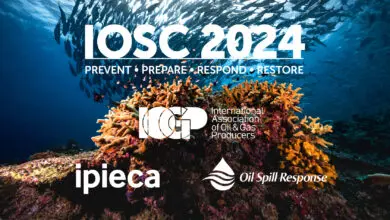
The transition to a low carbon future offers a huge set of challenges to us all – from how we heat our homes to how the companies we work for will enable the transition.
Applying our metocean expertise is one of the many ways in which we, as an industry, can tackle these challenges and help drive the transition.
For nearly 50 years, we’ve been studying the metocean environment. We’ve focused on how wind, waves, and ocean currents impact offshore structures, so that we can design safe facilities – to protect the people on them and the environment they’re in. We’ve also become experts in metocean conditions to underpin safe operations, whether that’s construction operations, drilling, helicopter travel, or moving objects on deck.
It’s been a long journey. Major events, like the 1995 Draupner extreme wave, which peaked well above the estimated 20 metres, have tested our knowledge and spurred considerable learning. Thanks to countless studies and validation, we now have far better means of calculating the probability of such events. Through five decades of information gathering and joint industry projects – creating databases like NS1200, which contains 1200 years’ worth of North Sea and Caspian Sea storm data, and long synthetic datasets and numerous hindcasts for other regions – we also have a lot of data at our disposal.
These are data and expertise that could now underpin and help ramp-up offshore renewables, not least the next generation of offshore wind development – bigger, deeper and floating projects – as well as Carbon Capture Use and Storage (CCUS) projects all around the world, to help major economies meet their net zero goals. There is a significant amount of interchangeable expertise in CCUS, from onshore compressor design to pipeline design, reservoir analytics and drilling, all of which involve metocean elements. IOGP’s CCS Monitoring Task Force, a joint project of the Metocean, Geomatics, and Environment Committees, is developing an industry guideline, to be published in 2022, for seabed and overburden integrity monitoring for marine CO₂ storage projects. The goal is to allow operators to build technical specifications for near surface site characterization/baseline and risk-based monitoring of CO2 storage.
We can support the build-out of offshore wind in a number of ways, with engineering design a key one. Having successfully built and beaten cost reduction expectations faster than expected, wind developers are now targeting even bigger projects in ever deeper waters. The first offshore wind turbines in 2012 were around 3MW. Today, 10MW machines are being deployed. Next year, a 15MW turbine will be tested and 20MW turbines are on the horizon. By the end of the decade, the first gigawatt-scale floating offshore wind developments are also expected to be well underway. These are exciting frontiers for the offshore wind industry.
While the drivers for offshore wind are different – it’s about the levelized cost of energy (LCOE) and balancing the resilience of the turbines with the economics of the project – the principles around understanding local conditions and how to apply metocean and oceanographic data to achieve the appropriate design risk are the same.
With our expertise, we can help to explore and potentially enhance the design standards for offshore wind, especially as they’re built deeper offshore. We can help assess whether, for example, a 50-year return period is adequate for floating developments, which have a different risk profile due to their inherently more dynamic nature, as well as for fixed-bottom wind.
With our large datasets, instead of extrapolating metocean conditions to long return periods, we can also apply response-based analysis (RBA) methods, where we run real metocean data through a simplified version of a floating or fixed structure to see how it would react – which allows us to identify exactly the metocean conditions that will drive the 100 – or 500 – year load or other structural response. This reduces the number of detailed load cases we need to run because we’ve been able to home in on the critical metocean conditions. Importantly, it means we’re designing things much safer because we understand what’s really going to excite and load-up the structure.
Wind resource assessment is another way the industry can support the growth of offshore wind. We have extensive data and many of the skills that wind resource assessors need. They’re the equivalent of our subsurface teams in oil and gas, and need knowledge across the metocean, statistical, and hydrodynamic domains. We have all of these in oil and gas in spades, and on top of that, we can bring the latest in computational fluid dynamics and advanced statistics into play. We think it’s an area that is ripe for innovation.
There may be challenges. Traditionally, the metocean discipline in oil and gas is very collaborative. Our goal is mutual – to drive down risk to life. In the offshore wind industry, better metocean understanding can mean a competitive edge; it’s their key resource.
Nevertheless, we think some of the work the IOGP Metocean Committee has done is readily adaptable for use in offshore wind, as well as other offshore renewable energies, such as wave and tidal. We already support the Extreme and Normal Offshore Wind (ENOW) Joint Industry Programme and, through System of Industry Metocean data for the Offshore and Research Communities (SIMORC), we also make oceanographic and marine data gathered by some of our Members available to science, to support deeper and wider research, whether that’s in climate science or understanding marine ecosystems. Which brings us on to other area where we can support offshore wind – in conducting environmental impact assessments.
“There’s no shortage of similarities between oil and gas, offshore wind and CCUS within the metocean discipline. There’s huge scope for us and what we can offer to help drive the energy transition and we’re ready to get stuck in,” says Oli Jones, Chair of the IOGP Metocean Committee.



